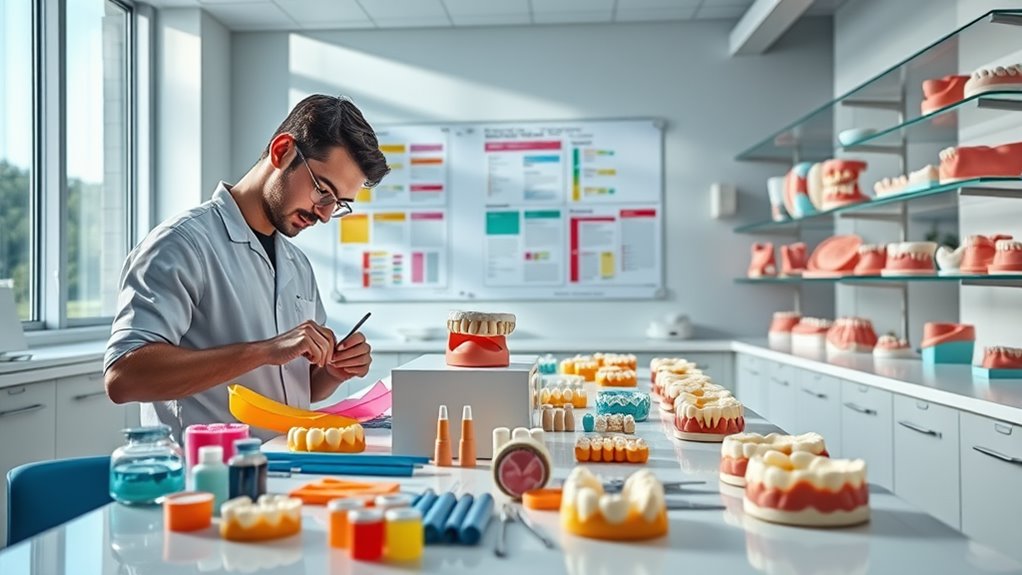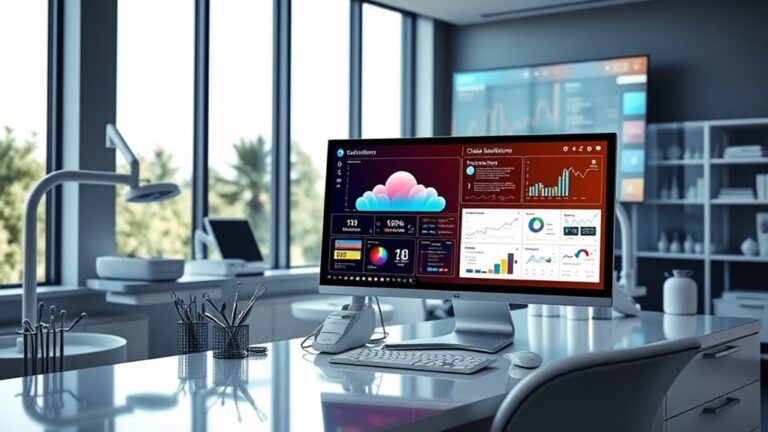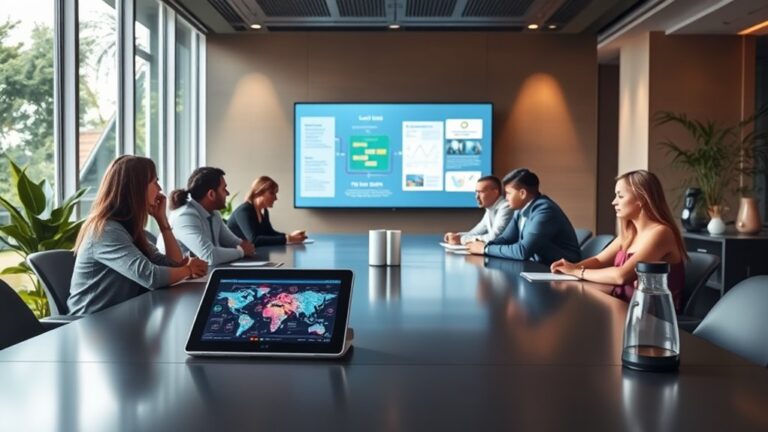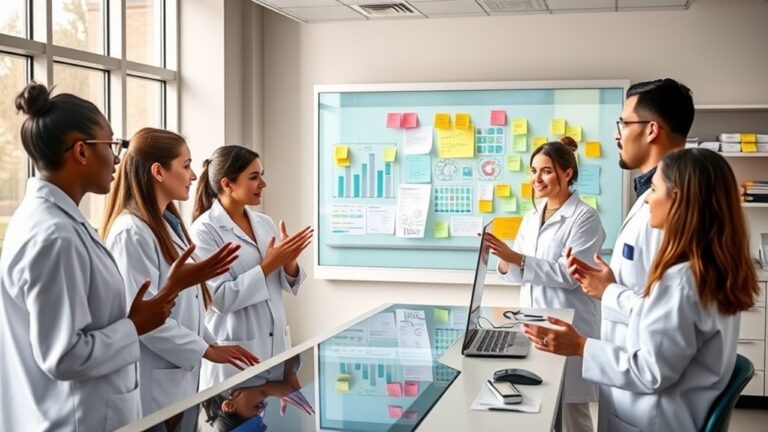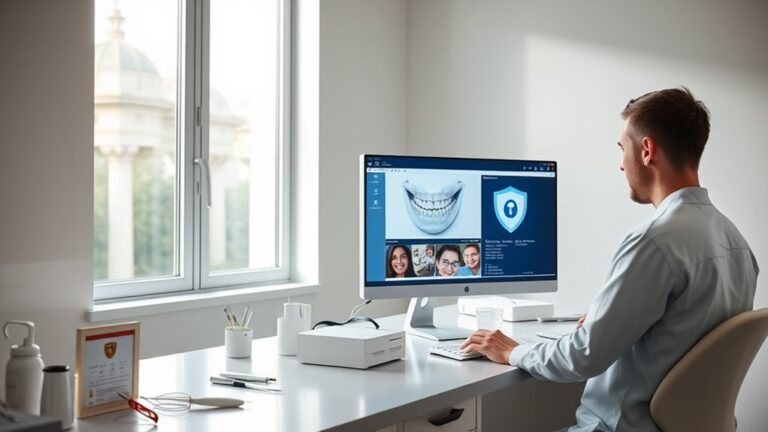Optimize Case Flow: Effective Communication for Dental Labs
Is it true that effective communication can greatly streamline case flow in dental labs? The answer lies in how well all parties—dentists, technicians, and patients—connect and share information. By exploring various communication channels, documentation practices, and technology integrations, you can uncover strategies that not only minimize errors but also enhance collaboration. What specific steps can you take to foster an environment where everyone feels informed and engaged?
If you're looking for expert guidance on improving communication in your dental lab, feel free to contact us. We can connect you with professionals who provide tailored solutions to optimize your case flow.
Importance of Effective Communication
Effective communication forms the backbone of successful dental lab operations. It's essential for trust building between you and dentists, laying the groundwork for strong, lasting relationships.
Clear and detailed instructions minimize misunderstandings, ensuring that everyone's on the same page and reducing the risk of errors. By fostering a strong interrelationship between the dental lab and the dentist, you can further enhance collaboration and the quality of restorations.
Incorporating continuous feedback loops enhances the quality of dental restorations. By maintaining open lines of communication, you can address concerns promptly and improve outcomes.
Leveraging social media not only showcases your lab's strengths but also provides a direct channel for inquiries and feedback. Consistent updates build visibility and reinforce your reputation in the industry.
Moreover, involving your lab early in treatment planning gathers crucial information, which leads to better case documentation. This precision helps convey patients' needs effectively, ensuring you create customized dental prosthetics that meet expectations.
Key Communication Channels
Building on the foundation of trust established through effective communication, utilizing the right channels is essential for seamless collaboration between dental labs and dentists.
By integrating both face-to-face interactions and digital tools, you can enhance your workflow and guarantee that everyone stays informed and aligned.
Here are key communication channels to take into account:
- Face-to-Face Meetings: Regular consultations foster trust and allow for immediate clarification of treatment plans and concerns.
- Secure Messaging Platforms: These tools enable quick exchanges of information and feedback, guaranteeing efficient communication.
- Virtual Meetings: When in-person interactions aren't possible, virtual meetings maintain open lines and facilitate collaborative problem-solving.
- Digital Documentation: Sharing digital impressions and photographs enhances clarity and helps in creating accurate restorations, which is crucial for improved patient outcomes.
- Standardized Systems: Implementing structured communication practices guarantees everyone has access to relevant case information.
Utilizing these channels not only minimizes delays but also strengthens the professional relationship between labs and dentists.
Case Documentation and Tracking
Accurate case documentation and tracking are fundamental for guaranteeing ideal outcomes in dental lab operations. To achieve case accuracy, you must include thorough patient information, treatment objectives, and specific instructions. Document the date of examination in full and capture all clinical findings, such as the size and location of caries. Utilize standardized templates for consistency, reducing the risk of omissions.
Implement clear documentation standards across your team by using uniform symbols, abbreviations, and language. Confirm your lab prescription forms contain detailed sections for all necessary information. Digital log sheets with dropdown menus can enhance uniformity and efficiency. Centralized records help ensure that all critical details are easily accessible for reference.
When detailing case specifications, include the required dental procedures, tooth numbers, and shade information to ascertain the final product matches the patient's needs. Regularly update the case status to track progress and document all interactions promptly.
Maintain a centralized record that captures crucial details, and confirm accountability by having all entries signed or initialed.
Workflow Optimization
Streamlining workflows in dental labs is essential for enhancing efficiency and delivering quality outcomes. By focusing on process mapping and effective resource allocation, you can identify and eliminate bottlenecks that slow down operations.
Here are some strategies to optimize your workflow:
- Identify bottlenecks: Look at reception areas, sterilization rooms, and operatories for areas where delays occur.
- Leverage technology: Use intraoral scanners and CAD/CAM systems for faster, more accurate results. Technology adoption in dental practices has increased significantly, leading to improved operational efficiency.
- Coordinate tasks: Ascertain that your dental staff collaborates effectively, delegating tasks based on skill sets.
- Automate processes: Implement software solutions that streamline case tracking and communication with labs.
- Encourage continuous improvement: Foster an environment that values feedback and adapts to changing needs.
Patient Communication Strategies
Optimizing workflows in dental labs improves not just operational efficiency but also enhances patient communication. To achieve this, use clear and concise language when discussing treatments and procedures. Avoid jargon; instead, employ visual aids to convey complex information effectively. Summarize findings and recommended treatments after each examination to guarantee patients feel informed.
Adopting a patient-centered approach is essential. Focus on understanding their needs and involve them in shared decision-making. Use active listening to grasp their concerns and provide empathetic responses that validate their feelings. Encourage patients to ask questions, fostering an environment where they feel in control of their treatment plans. Incorporating effective communication practices not only facilitates better understanding but also enhances collaboration between the dental team and patients.
Effective interaction techniques can further enhance communication. Maintain proper body posture, use appropriate gestures, and make eye contact to convey attentiveness. Discuss fees transparently and confirm that patients understand their options.
Finally, build trust by explaining each visit's agenda and engaging in light conversation about their interests.
Incorporating these strategies won't only improve communication but also strengthen the relationship between dental labs and patients, ultimately leading to better treatment outcomes and increased satisfaction.
Technology and Software Integration
Integrating technology and software into dental labs transforms how you manage workflows and communicate with dental practices. By adopting digital workflows and software automation, you can streamline operations, reduce errors, and enhance collaboration.
Here are key benefits you'll experience:
- Organized Digital File Management: Store and manage CAD/CAM designs and 3D models securely.
- Automated Data Exchange: Minimize manual data entry and reduce errors through real-time data sharing.
- Enhanced Communication: Collaborate effortlessly with dental practices, facilitating instant updates and feedback.
- Customizable Workflows: Tailor operations to fit your lab's unique needs, improving efficiency and service quality.
- Instant Invoicing: Generate invoices immediately upon case completion, accelerating your revenue cycle. Additionally, the structured billing systems in dental lab billing software reduce time spent on paperwork, facilitating quicker invoice generation and payment collection.
With these tools, you not only improve your lab's efficiency but also enhance the overall experience for dental practices.
By integrating technology, you can focus more on delivering exceptional service to your clients while ensuring that every detail of the case is managed accurately and timely.
Embrace this transformation to foster a more productive and collaborative environment in your dental lab.
Enhancing Professional Relationships
How can you foster stronger professional relationships within your dental lab? Start by prioritizing clear and open communication. Schedule regular check-ins with lab partners to discuss case progress and address any issues early on.
Be specific about expectations and requirements to avoid misunderstandings. Encourage questions and guarantee everyone's on the same page, agreeing on preferred communication methods for consistency.
Mutual respect and trust are essential for relationship building. Acknowledge the skills and knowledge of your lab technicians, treating them as integral members of the dental team.
Value their input and be open to collaborative feedback, using it to enhance your partnership.
Invest in continuous learning together. Attend conferences or workshops and share relevant research to cultivate a culture of growth. Standardizing processes can also create a more efficient workflow and reduce the potential for errors.
Engaging in joint treatment planning and training sessions will align your goals and improve outcomes.
Finally, recognize and celebrate success. Share positive patient feedback and celebrate complex cases to boost morale.
Consider implementing a partner appreciation program to acknowledge hard work.
Frequently Asked Questions
How Can Dental Labs Measure the Effectiveness of Their Communication Strategies?
To measure the effectiveness of your communication strategies, track communication metrics using digital tools. Analyze response times, error rates, and feedback from staff and clients to identify areas for improvement and enhance overall communication efficiency.
What Training Is Needed for Staff on Communication Best Practices?
You need training on active listening and recognizing nonverbal cues to enhance communication. Focus on role-specific guidelines, encourage collaboration, and document procedures. Empower staff to engage effectively with patients, ensuring clarity and understanding throughout interactions.
How Do Cultural Differences Impact Communication in Dental Labs?
Did you know that 25% of patients face language barriers in healthcare? By enhancing cultural awareness, you can bridge these gaps, improving communication and ensuring effective treatment in dental labs while respecting diverse backgrounds and preferences.
What Role Does Feedback Play in Improving Communication Processes?
Feedback loops enhance communication clarity by addressing misunderstandings promptly. They guarantee you confirm message receipt, provide immediate corrections, and foster a collaborative environment, promoting trust and accountability among team members for improved interactions.
How Can Dental Labs Address Communication Breakdowns When They Occur?
To address communication breakdowns, you should implement reliable communication tools for issue resolution. Regular check-ins, clear documentation, and encouraging constructive feedback foster collaboration, ensuring everyone stays informed and engaged throughout the process.
Conclusion
In summary, if you think you can run a dental lab without effective communication, you might as well try pulling teeth with a spoon. Embrace clear instructions, automated processes, and open dialogue—because who doesn't love a good chat? By optimizing your case flow, you're not just preventing misunderstandings; you're ensuring your restorations don't end up as puzzles for patients.
If you're facing challenges in your dental practice, don't hesitate to reach out to us for assistance. Our expert help can save you time, reduce stress, and enhance the overall efficiency of your operations. Let's communicate effectively and keep those smiles bright—after all, nobody wants a tooth fairy with a bad reputation!

